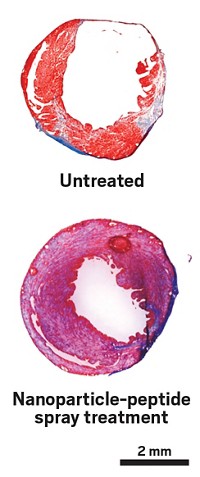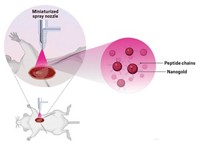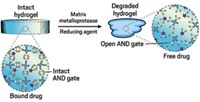Advertisement
Grab your lab coat. Let's get started
Welcome!
Welcome!
Create an account below to get 6 C&EN articles per month, receive newsletters and more - all free.
It seems this is your first time logging in online. Please enter the following information to continue.
As an ACS member you automatically get access to this site. All we need is few more details to create your reading experience.
Not you? Sign in with a different account.
Not you? Sign in with a different account.
ERROR 1
ERROR 1
ERROR 2
ERROR 2
ERROR 2
ERROR 2
ERROR 2
Password and Confirm password must match.
If you have an ACS member number, please enter it here so we can link this account to your membership. (optional)
ERROR 2
ACS values your privacy. By submitting your information, you are gaining access to C&EN and subscribing to our weekly newsletter. We use the information you provide to make your reading experience better, and we will never sell your data to third party members.
Pharmaceuticals
Hydrogel Targets Inflammatory Bowel Disease
Drug Delivery: Self-assembled nanofiber network could improve conventional enema treatments for Crohn’s disease and ulceritive colitis
by Matt Davenport
August 17, 2015
| A version of this story appeared in
Volume 93, Issue 32
Drug-infused enemas are important but imperfect weapons in the fight against inflammatory bowel disease, including Crohn’s disease and ulcerative colitis. They deliver drugs directly into a patient’s gastrointestinal tract, but their payloads work slowly and are unable to selectively treat diseased tissue. Patients can require frequent, even daily, enemas loaded with chemicals capable of affecting healthy cells to ensure that inflamed tissues receive sufficient medication. A hydrogel developed by a multi-institutional research team led by Jeffrey M. Karp of Brigham & Women’s Hospital, in Boston, appears to address the shortcomings of conventional enemas (Sci. Transl. Med. 2015, DOI: 10.1126/scitranslmed.aaa5657). The hydrogel relies on ascorbyl palmitate molecules—which FDA already recognizes as safe—that self-assemble into a nanofibrous network. Researchers can readily load the network with medicine, making the hydrogel a simple and scalable drug delivery platform, Karp says. Using animal models and human tissue samples, the team has shown that the hydrogel’s negative electrostatic charge quickly anchors it to positive surface charges prevalent at inflammation sites. Enzymes near these sites then cleave bonds within the network, freeing the encapsulated drug. The system still needs clinical evaluation, notes pharmaceutical scientist Abraham Rubinstein of Hebrew University of Jerusalem. But Rubinstein adds that the team’s study “is elegant and interesting” and shows how a simple approach can work in a complex biological environment.





Join the conversation
Contact the reporter
Submit a Letter to the Editor for publication
Engage with us on Twitter